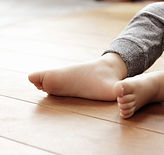
Orthotics
Orthotics
Orthotics are shoe inserts that correct an abnormal, or irregular, walking pattern. Generally called arch supports, orthotics allow people to stand, walk, and run more efficiently and comfortably.
Podiatrists sometimes prescribe orthotic devices to correct an abnormal walk, or gait, and often for patients following surgery.
Orthotic devices come in many shapes and sizes, and materials and fall into three main categories: those designed to change foot function, are primarily protective in nature, and those that combine functional control and protection.



What is Pronation?
Rigid orthotics
The so-called rigid orthotic device, designed to control function, is often composed of a firm material such as plastic or carbon fiber, and is used primarily for walking or dress shoes. Such orthotics are made from a mold after a podiatrist takes a plaster cast or other kind of image of the foot.
Rigid orthotics control motion in two major foot joints that lie directly below the ankle joint and may improve or eliminate strains, aches, and pains in the legs, thighs, and lower back.
Soft orthotics
Soft orthotics usually absorb shock, increase balance, and take pressure off uncomfortable or sore spots. They are typically made up of soft, cushy materials. Soft orthoses also are worn against the sole of the foot, extending from the heel past the ball of the foot, including the toes. Such orthotics are also made from a mold after a podiatrist takes a plaster cast or other kind of image of the foot.
Soft orthoses are usually effective for diabetic, arthritic, and deformed feet.
Semi-rigid orthotics
Semi-rigid orthotics provide foot balance for walking or participating in sports. Sometimes, different sports call for different kinds of semi-rigid orthotics. The typical semi-rigid orthotic is made up of layers of soft material, reinforced with more rigid materials.
Children are sometimes given orthoses to treat flatfoot or intoeing or outtoeing disorders. Athletes often are given orthoses to mitigate pain while they train and compete.
While over-the-counter orthotic inserts help people with mild symptoms, they normally cannot correct the wide range of symptoms that prescription foot orthoses can since they are made to fit a person with an "average" foot shape.




.png)
.png)





